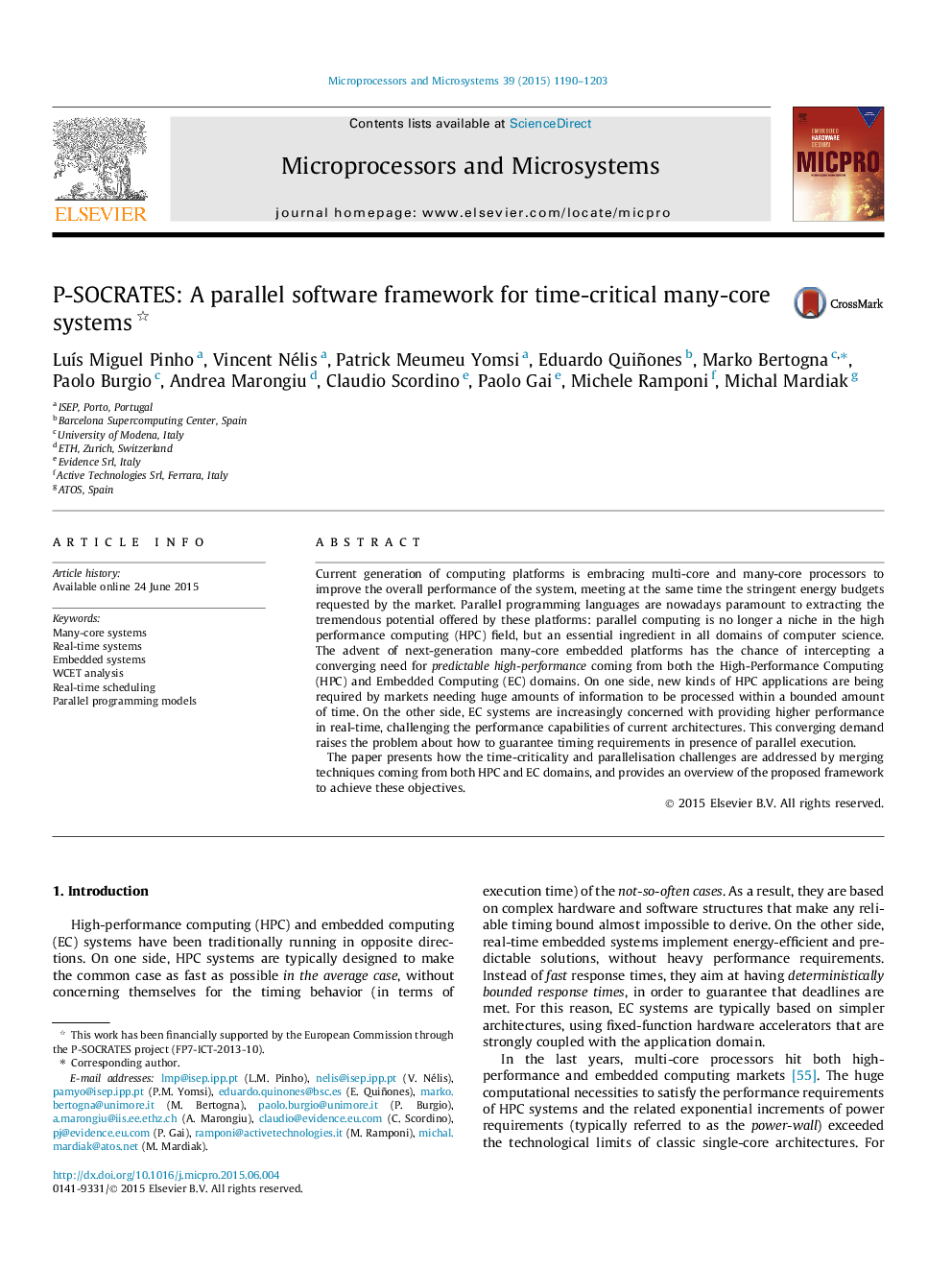| Article ID | Journal | Published Year | Pages | File Type |
|---|---|---|---|---|
| 461345 | Microprocessors and Microsystems | 2015 | 14 Pages |
Current generation of computing platforms is embracing multi-core and many-core processors to improve the overall performance of the system, meeting at the same time the stringent energy budgets requested by the market. Parallel programming languages are nowadays paramount to extracting the tremendous potential offered by these platforms: parallel computing is no longer a niche in the high performance computing (HPC) field, but an essential ingredient in all domains of computer science. The advent of next-generation many-core embedded platforms has the chance of intercepting a converging need for predictable high-performance coming from both the High-Performance Computing (HPC) and Embedded Computing (EC) domains. On one side, new kinds of HPC applications are being required by markets needing huge amounts of information to be processed within a bounded amount of time. On the other side, EC systems are increasingly concerned with providing higher performance in real-time, challenging the performance capabilities of current architectures. This converging demand raises the problem about how to guarantee timing requirements in presence of parallel execution.The paper presents how the time-criticality and parallelisation challenges are addressed by merging techniques coming from both HPC and EC domains, and provides an overview of the proposed framework to achieve these objectives.
